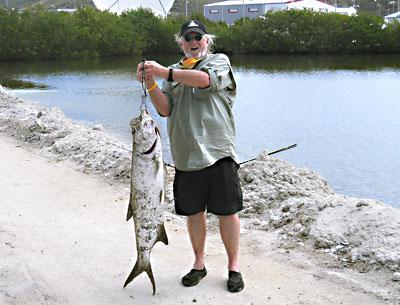Fluke Hang in the Balance

The Ides of March, the days on and around March 15, were the start of the new year on the ancient Roman calendar. It was considered a propitious time full of promise unless you happened to be Julius Caesar, or the old men back in ancient Greece — long before Medicare — who were first dressed in animal skins, then beaten, and finally driven from town to celebrate the expulsion of the old year.
One way or another, the two sides of Ides are felt by everyone, routinely by charter and party-boat anglers who have gotten used to feeling at turns optimistic then betrayed and beaten by a Byzantine regulatory system. In the case of fluke (summer flounder), some anglers are driven from their native New York by New Jersey’s more liberal catch limits.
This will not change in 2013, much to the dismay of Montauk’s charter fleet. Because of a larger quota given New Jersey by the Mid-Atlantic Fisheries Management Council, based on historic landings, that state’s conservation department has decided to permit anglers five fluke measuring at least 17.5 inches long per day, from May 18 to Sept. 16 — very appealing to UpIsland anglers. But wait. . . .
For the first time ever, it looks as though other coastal states that never seem to fill their annual fluke quota may agree to pass a portion of their share to the Empire State. The New York State Department of Environmental Conservation, whose job it is to divvy up New York’s perennially smaller quota among users, would have offered anglers a reduced catch. The size and bag limits would have remained the same, four 19.5-inch fluke per day, but the season would be shortened, running from May 17 to Sept. 4 instead of May 1 to Sept. 30.
The possibility of “lending” New York quota is being discussed among Mid-Atlantic Council delegates, and if the give-back comes to pass, New York may be able to keep the size limit the same, but extend the season by over a month, from May 1 to Sept. 30.
“There’s a high probability of borrowing 72,000 pounds of fluke from another state,” said Tom Jordon, T.J., of the Gone Fishing Marina in Montauk and a member of the Marine Resources Advisory Council. “If so, fluke will remain status quo for this year. But there’s a small possibility we’ll get even more and they would contemplate a slight loosening of regulations, possibly even lowering the size limit by a half-inch.”
A half-inch doesn’t sound like much, but it could make a big difference to a number of day-tripping party boats that don’t venture too far offshore when larger fluke are found.
Jordon said fishermen were probably looking at catch reductions in the popular black sea bass fishery.
Ken Morse of the Tightlines shop in Sag Harbor reported an absence of fishing activity in his neck of the woods, but spent a few minutes decrying the D.E.C.’s decision to keep the winter flounder fishery open despite the dramatic absence of the species in local waters.
“I’m in the business and I can’t promote it. The state should shut it down. I recommend, don’t go flounder fishing. Go to a stocked pond. They’re beating on a species that’s beaten down,” Mr. Morse said, going on to remind anglers that trout season begins on April 1 with local freshwater bodies in Southampton and parts west stocked by the D.E.C.
